The Handley Page Halifax is a British Royal Air Force (RAF) four-engined heavy bomber of the Second World War.
History
It was developed by Handley Page to the same specification as the contemporary twin-engine Avro Manchester.The Halifax performed its first flight on 25 October 1939, and entered service with the RAF on 13 November 1940. It quickly became a major component of Bomber Command, performing strategic bombing missions against the Axis Powers, primarily at night. Arthur Harris, the Air Officer Commanding-in-Chief of Bomber Command, described the Halifax as inferior to the rival Lancaster (in part due to its smaller payload) though this opinion was not shared by many of the crews that flew it.[2] Nevertheless, production of the Halifax continued until April 1945. During their service with Bomber Command, Halifaxes flew 82,773 operations and dropped 224,207 long tons (227,805 t) of bombs, while 1,833 aircraft were lost. The Halifax was also flown in large numbers by other Allied and Commonwealth nations, such as the Royal Canadian Air Force (RCAF), Royal Australian Air Force (RAAF), and Free French Air Force.
Various improved versions of the Halifax were introduced, incorporating more powerful engines, a revised defensive turret layout and increased payload. It remained in service with Bomber Command until the end of the war, performing a variety of duties in addition to bombing. Specialised versions of the Halifax were developed for troop transport and paradrop operations. After the Second World War, the RAF quickly retired the Halifax, the type being succeeded as a strategic bomber by the Avro Lincoln, an advanced derivative of the Lancaster. During the post-war years, the Halifax was operated by the Royal Egyptian Air Force, the French Air Force and the Royal Pakistan Air Force. The type also entered commercial service for a number of years, used mainly as a freighter. A dedicated civil transport variant, the Handley Page Halton, was also developed and entered airline service; 41 civil Halifax freighters were used during the Berlin Airlift. In 1961, the last remaining Halifax bombers were retired from operational use.
Armament
Guns: 8 × .303 in (7.7 mm) Browning machine guns 4 in dorsal turret (camera aim) , 4 in tail turret(camera aim)
Bombs: 9,000lb (4,082 kg) of bombs
Sorry no exterior, cockpit details because i want the part to be low
~Enjoy 😁😁
Specifications
Spotlights
- pancelvonat 1.9 years ago
- Bryan5 1.9 years ago
General Characteristics
- Created On Android
- Wingspan 104.2ft (31.8m)
- Length 72.8ft (22.2m)
- Height 21.7ft (6.6m)
- Empty Weight 50,016lbs (22,687kg)
- Loaded Weight 63,240lbs (28,685kg)
Performance
- Horse Power/Weight Ratio 0.102
- Wing Loading 37.1lbs/ft2 (181.0kg/m2)
- Wing Area 1,705.7ft2 (158.5m2)
- Drag Points 15315
Parts
- Number of Parts 343
- Control Surfaces 12
- Performance Cost 1,576


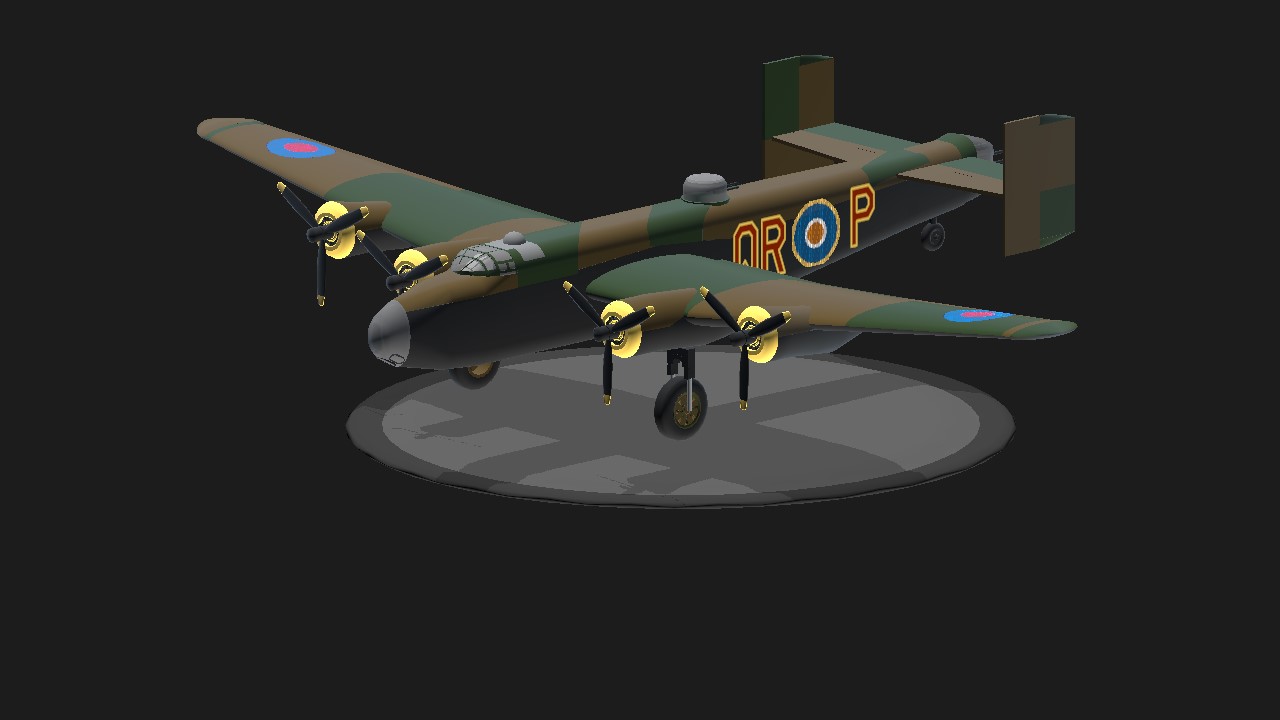
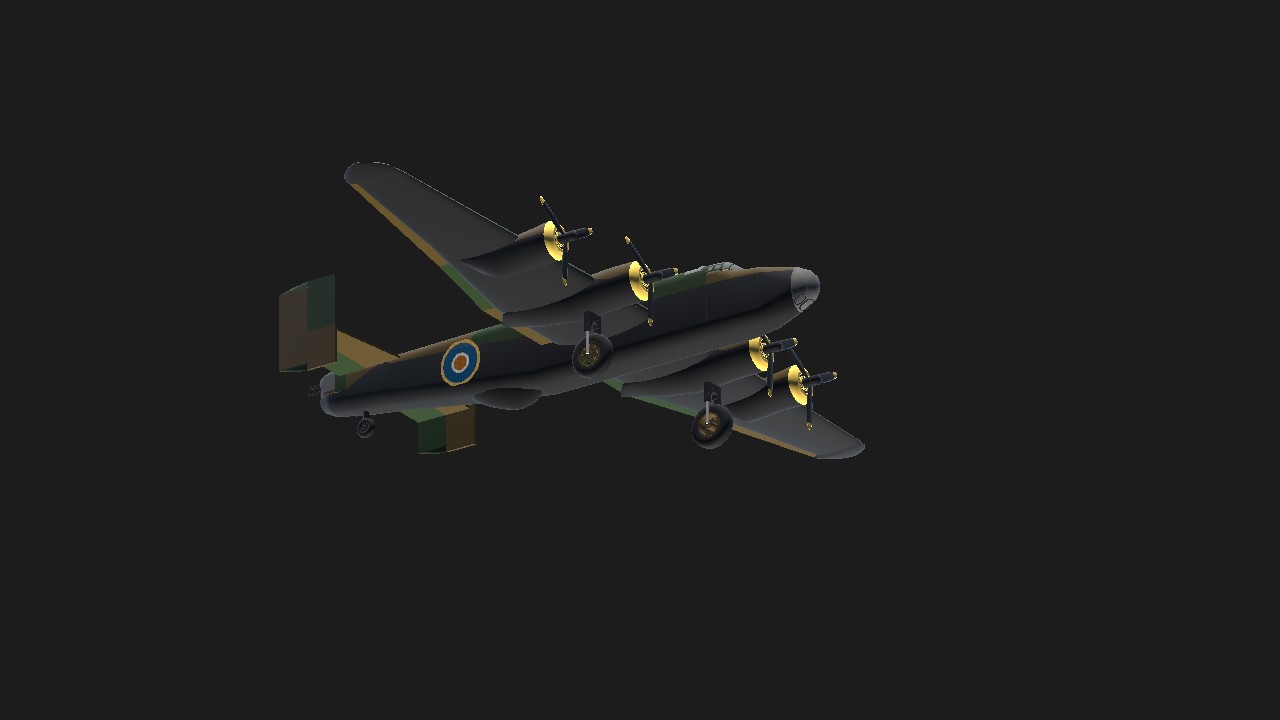
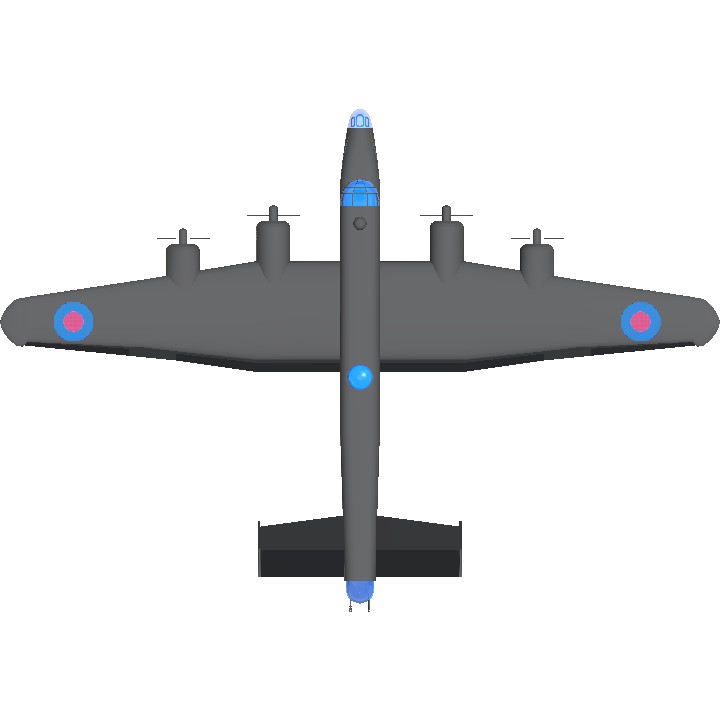
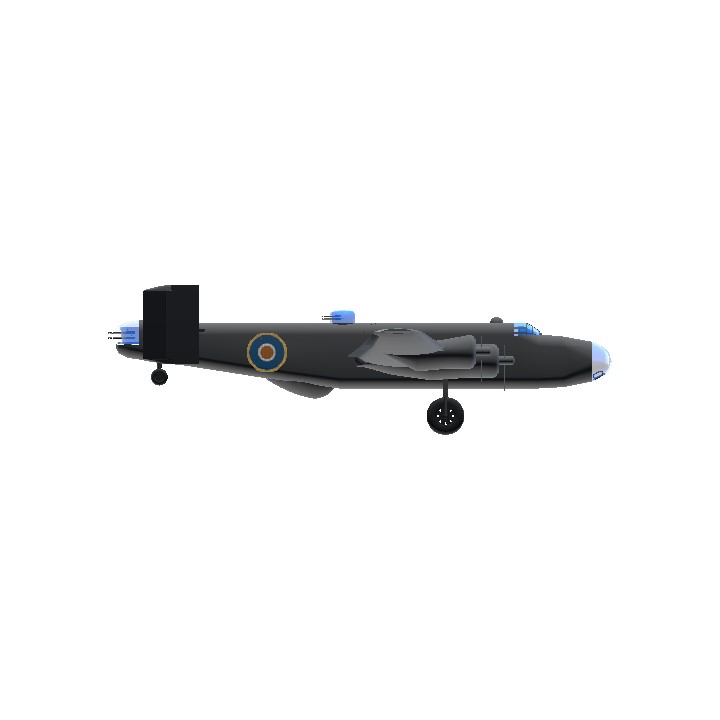
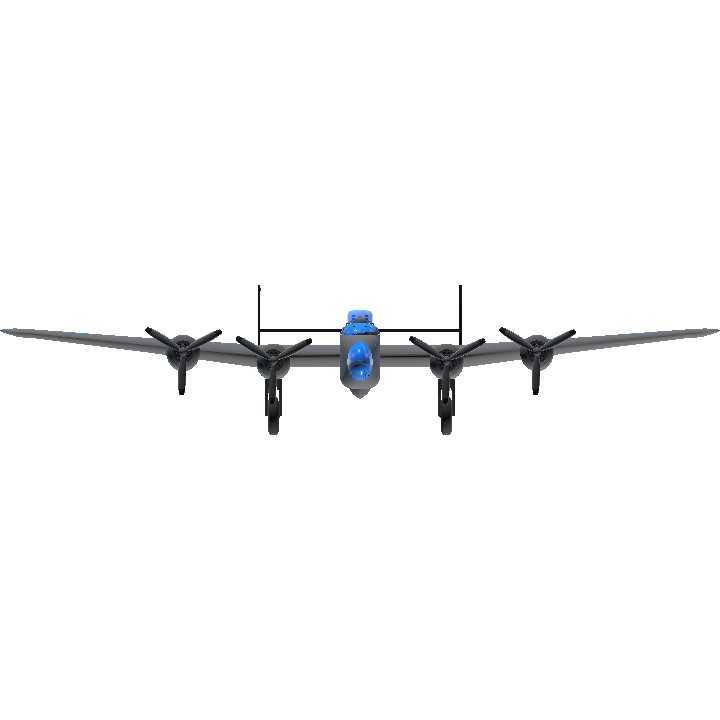
Didn't expect to get this many Upvotes, but Thank you everyone!!
Happy flying
hey this is pretty good